高中英语必修4公开课课件
- 格式:ppt
- 大小:4.73 MB
- 文档页数:75
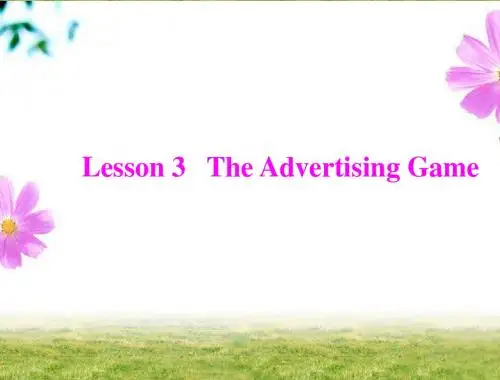
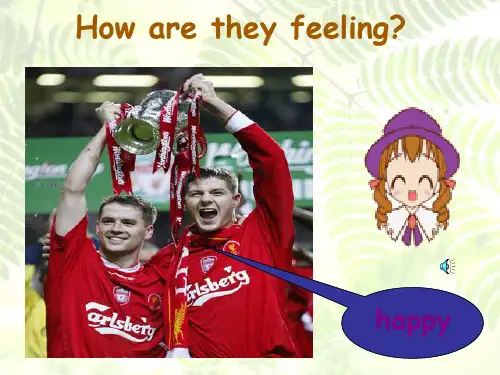
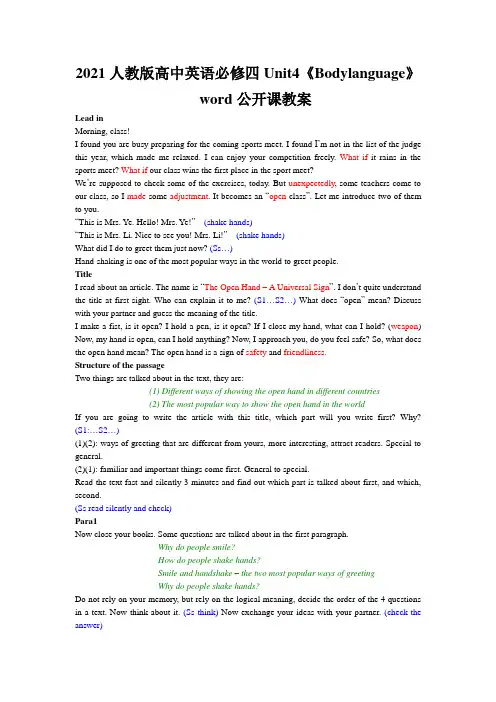
2021人教版高中英语必修四Unit4《Bodylanguage》word公开课教案Lead inMorning, class!I found you are busy preparing for the coming sports meet. I found I’m not in the list of the judge this year, which made me relaxed. I can enjoy your competition freely. What if it rains in the sports meet?What if our class wins the first place in the sport meet?We’re supposed to check some of the exercises, today. But unexpectedly, some teachers come to our class, so I made some adjustment. It becomes an “open class”. Let me introduce two of them to you.“This is Mrs. Ye. Hello! Mrs. Ye!”(shake hands)“This is Mrs. Li. Nice to see you! Mrs. Li!”(shake hands)What did I do to greet them just now? (Ss…)Hand-shaking is one of the most popular ways in the world to greet people.TitleI read about an article. The name is “The Open Hand – A Universal Sign”. I don’t quite understand the title at first sight. Who can explain it to me? (S1…S2…) What does “open” mean? Discuss with your partner and guess the meaning of the title.I make a fist, is it open? I hold a pen, is it open? If I close my hand, what can I hold? (weapon) Now, my hand is open, can I hold anything? Now, I approach you, do you feel safe? So, what does the open hand mean? The open hand is a sign of safety and friendliness.Structure of the passageTwo things are talked about in the text, they are:(1) Different ways of showing the open hand in different countries(2) The most popular way to show the open hand in the worldIf you are going to write the article with this title, which part will you write first? Why? (S1:…S2…)(1)(2): ways of greeting that are different from yours, more interesting, attract readers. Special to general.(2)(1): familiar and important things come first. General to special.Read the text fast and silently 3 minutes and find out which part is talked about first, and which, second.(Ss read silently and check)Para1Now close your books. Some questions are talked about in the first paragraph.Why do people smile?How do people shake hands?Smile and handshake – the two most popular ways of greetingWhy do people shake hands?Do not rely on your memory, but rely on the logical meaning, decide the order of the 4 questions in a text. Now think about it. (Ss think) Now exchange your ideas with your partner. (check the answer)The most popular way to show the open hand in the worldSmile and handshake – the two most popular ways of greetingWhy do people smile?Why do people shake hands?How do people shake hands?Now read paragraph1 carefully and silently for 2 minutes and find out 3 sentences to answer the three questions. One sentence for one question. (check the answers together)Some sentences have similar structures? Can you find them?What if…? What if…? What if…?We have to…, and we have to…It shows that…, and that…Repetition makes the meaning stronger, but they may not be the key sentence. And it is necessary to tell the key sentence from the supporting details.How do you understand some expressions in this paragraph?Stranger: someone we don’t knowUnfamiliar place: place we haven’t been to or know little aboutTrust: believe in, rely onBe armed (with): be equipped with weaponPractice explaining the meaning of the expressions. Aloud. (Ss practice. Cross out the explanation and practice together again)Para2Although handshake is widely used in the world, people in some Asian cultures do not always touch another person. So, how can they show their open hand? Please work together with your desk mate to find out how they greet people.ChineseJapaneseHinduMuslimYoung people in the west(Ask a group of Ss to demonstrate one by one. After one student’s demonstration, explain.) Chinese: Wrong! The textbook is not always correct. 作揖hand, mouse, earJapanese: slightly – a little, if the person is unfamiliar, if the person is important.Hindu: hands not too low, “bow” not “nod”Muslim: students more familiar, now only touch heartYoung people in the West: five fingers, Give me five!, support and victoryLet’s practice!Class, stand up! Turn around and face your desk mate. I’ll tell you where you are from, and you perform.1.both of you are from India2.both of you are Muslims3.both of you are young people in the West4.look at me, this one (left hand) is from china and this one is from JapanAre there any problems? If you are from different countries, maybe you’ll have to make adjustmentNow I’ll make the greetings and you explain how people from different cultures greet. Read out the sentences in the text aloud, please. (Do the movement, Ss explain)Although the body language is different, they have something in common. What do they have in common?If you look at the first sentence and the last sentence, you will find the first sentence tells the difference, and the last sentence tells the same meaning. (Opinion–supporting details-conclusion)Body language – differentCarried meaning – the sameDiscussionWhat can we do to avoid misunderstanding caused by ways of greeting between people from different cultures? (Discussion or S1…S2…)What can we do to avoid misunderstanding caused by waysof greeting between people from different cultures?Be friendly and understanding.Always wear a smile when greeting, for its something universal.Combine spoken language and unspoken language to communicate better.Learn more about cultural difference and make adjustment whenever necessary.My suggestion for leaning body language is thatWhen you see an English film or talk with native speakers,observe their facial expression and gestures. Keep a recordof what interests you most. Watch what people do as wellas what they say. You can learn more from actions than youcan from words.Bb designThe Open Hand – A Universal SignWhat if…? What if…? What if…? What if…?We have to…, and we have to…unexpectedlyIt shows that…, and that…make adjustmentopenweaponsafetyfriendliness。

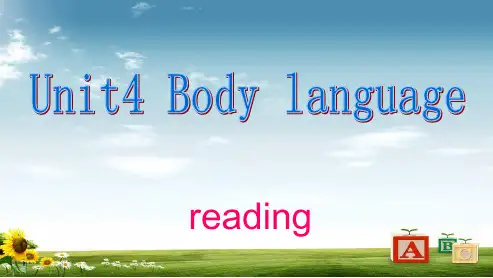

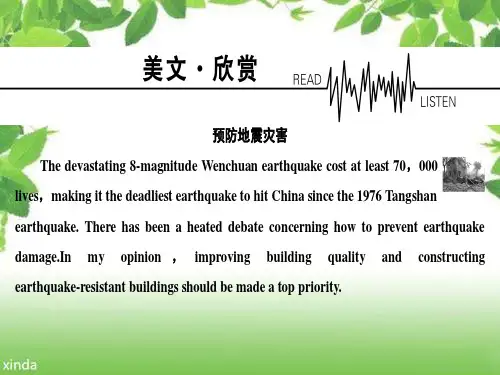
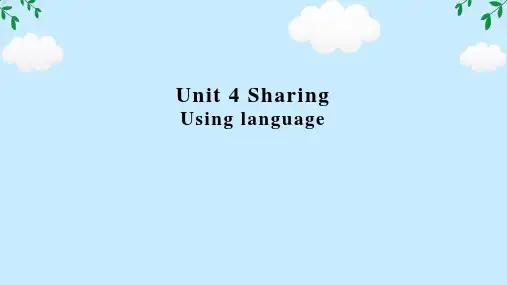
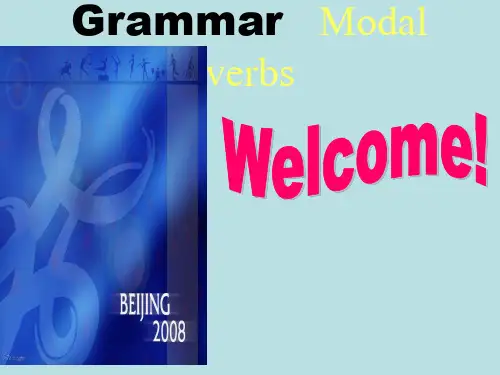
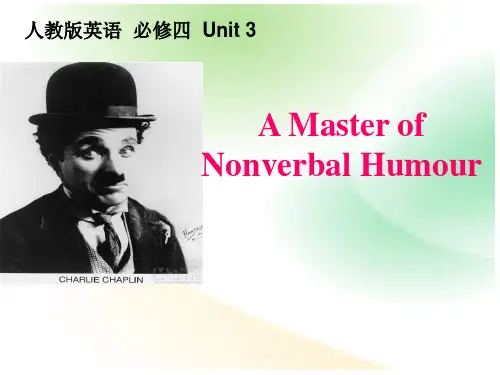
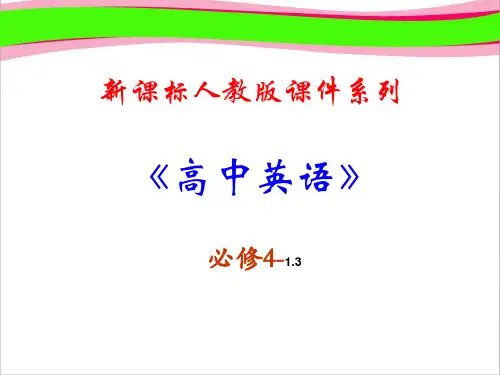
人教版高中英语unit4课件Unit 4 of the People's Education Press High School English textbook is focused on the theme of "Making the world a better place". This unit covers various topics related to global issues, such as environmental protection, poverty alleviation, and international cooperation. In this unit, students will learn vocabulary and grammar related to these topics, as well as practice their reading, writing, listening, and speaking skills.The unit begins with a reading passage about the importance of environmental protection and the role that individuals can play in preserving our planet. Students will learn new words and phrases related to environmental issues, such as "sustainable development", "carbon footprint", and "green energy". They will also practice their reading comprehension by answering questions about the passage and discussing their thoughts on the topic in small groups.Following the reading passage, students will work on a grammar lesson that focuses on modal verbs and their uses in expressing possibility, necessity, and permission. They will practice using modal verbs such as "can", "could", "shall", "should", "must", and "may" in sentences related to environmental protection and other global issues.In the listening and speaking activities of this unit, students will listen to recordings of native speakers discussing environmental problems and solutions, then practice speaking about their own ideas for making the world a better place. They will also work on developing their listening skills by answering questions and summarizing information from the recordings.In the writing activities of this unit, students will write essays and articles about global issues such as poverty, education, and healthcare. They will learn how to structure their writing, use appropriate vocabulary and grammar, and express their opinions clearly and convincingly.Overall, Unit 4 of the People's Education Press High School English textbook provides students with a comprehensive understanding of global issues and challenges them to think critically about how they can contribute to making the world a better place. Through a combination of reading, writing, listening, and speaking activities, students will develop their English language skills while also gaining knowledge and awareness of important global issues.。
Unit 4 Body LanguagePart 1 Teaching Design第一部分教学设计P eriod 2 A sam pie lesson plan for Learning aboutLanguage仃he ~ing form as the Attribute & Adverbial)Introductio nIn this p eriod stude nts will be first helped by the teacher to discover and lear n to use some useful words and exp ressi ons, and the n to discover and lear n to use the follow ing useful structures: the ~ing form as the attribute & adverbial. The follow ing ste ps of teach ing may be take n: Warming up by discoveri ng useful words and expressi ons , Reading and thin king , Doing exercises , Going over the ready materials for the ・ing form as the adverbial , Doing exercises for consolidation , Closing dow n by doing a quiz.ObjectivesTo lear n about the -ing form as the attribute & adverbialTo discover and lear n to use some useful words and exp ressi onsTo discover and lear n to use some useful structuresP rocedures1. Warming up by discovering useful words and exp ressionsTurn to p age 28 and do the exercises first. Check your an swers aga inst your classmates2. Reading and thinkingTurn to p age 26 and read the text of COMMUNICATION: NO P ROBLEM? As you read alo ng, pay atte nti on to the uses of the -ing form as the attribute & adverbial.They are visitors comi ng from several coun tries ( attribute). Four people enter looking around (adverbial) in a curious way. This is an exciting (attribute) experienee for you. You stand watching and listening (adverbial).3. Doing exercisesTurn to p age 29. Do the exercises.4. Studying the -ing form as the adverbialthe ・ng form as the adverbialthe -ing form作状语表示主语在进行一动作的同时所进行的另一动作,它对谓语动词起修饰或陪衬的作用。